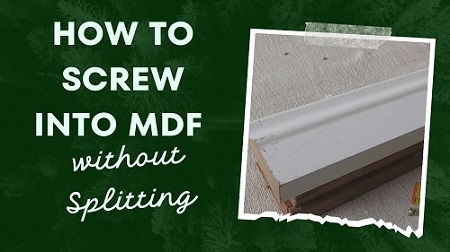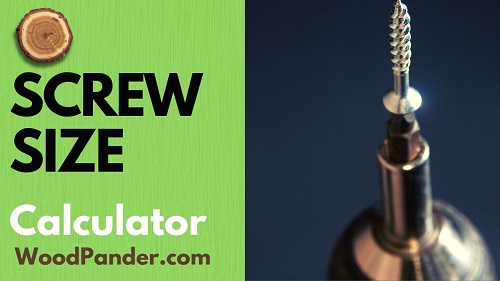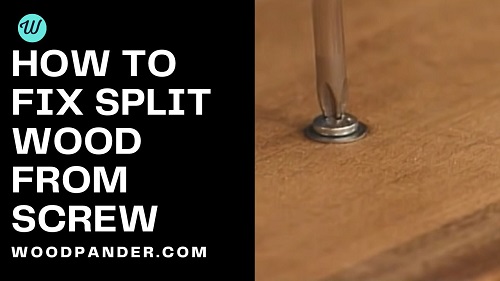This wood screw pilot hole calculator makes it easy to determine the appropriate pilot hole diameter for your project.
| Element | Description |
|---|---|
| Wood Type | Select the type of wood you will be working with from the options provided in the calculator. |
| Screw Size | Choose the size of the screw you will be using for your project, including diameter and length. |
| Tightness Level | Determine the desired level of tightness for your screws, which can vary depending on the project and wood type. |
| Calculator Input | Enter the selected wood type, screw size, and desired tightness level into the calculator. |
| Recommended Pilot Hole Size | The calculator will generate the recommended size of pilot hole needed for your specific project based on the inputs provided. |
| Pilot Hole Diameter | The diameter of the pilot hole recommended by the calculator, which ensures proper screw grip without splitting the wood. |
| Pilot Hole Depth | The depth of the pilot hole, which should match the length of the screw to ensure a secure fit. |
| Drill Process | Drill the pilot hole into the wood at the marked location using the recommended size and depth. |
| Screw Insertion | Insert the screw into the pilot hole and drive it in using a screwdriver or drill, ensuring a smooth and tight fit. |
One of our articles –Screw Size Calculator.
What is a Pilot Hole?
Wood Screw Pilot Hole Calculator
A pilot hole is a small hole that is drilled into a piece of wood before inserting a screw. It serves as a guide for the screw, allowing it to be driven in more easily and reducing the risk of splitting or cracking the wood. Pilot holes are especially important when working with hardwoods or when driving screws close to the edges of the wood, where splitting is more likely to occur.
Why Use a Wood Screw Pilot Hole Calculator?
Calculating the right size of pilot hole for your screws can be a challenging task, as it depends on various factors such as the type of wood, the size of the screw, and the desired level of tightness.
This is where a Wood Screw Pilot Hole Calculator comes in handy. With just a few simple inputs, such as the type of wood, screw size, and desired level of tightness, the calculator can determine the optimal size of pilot hole needed for your specific woodworking project.
How Does a Wood Screw Pilot Hole Calculator Work?
A Wood Screw Pilot Hole Calculator is a handy tool that simplifies the process of determining the right size and depth of pilot holes needed for screws in woodworking projects.
It works by taking into consideration the type of wood being used, the size of the screw, and the desired tightness level to calculate the optimal pilot hole dimensions.
Here’s how a Wood Screw Pilot Hole Calculator typically works:
- Wood Type Selection: The calculator allows you to select the type of wood you will be working with from a list of options. Different woods have different densities, which can affect the size of pilot hole needed for screws. For example, harder woods like oak or maple may require larger pilot holes compared to softer woods like pine or cedar.
- Screw Size Input: You input the size of the screw you will be using for your project, including the diameter and length. This information is crucial as it determines the thickness of the pilot hole required to accommodate the screw properly.
- Tightness Level: You choose the desired tightness level for your screws. This can vary depending on the project and the type of wood you are working with. For example, for a tighter fit, you may need a smaller pilot hole, while a looser fit may require a larger pilot hole.
- Calculator Output: Based on the inputs provided, the Wood Screw Pilot Hole Calculator generates the recommended size of pilot hole needed for your specific project. This typically includes the diameter and depth of the pilot hole.
- Drilling Process: Following the recommendations from the calculator, you drill the pilot hole into the wood at the marked location using the appropriate drill bit size and depth. It’s essential to drill straight and at the correct depth to ensure a proper fit for the screw.
- Screw Insertion: Once the pilot hole is drilled, you insert the screw into the hole and drive it in using a screwdriver or drill. The pilot hole provides a guide for the screw, ensuring it goes in smoothly and without splitting the wood, resulting in a secure and tight fit.
By using a Wood Screw Pilot Hole Calculator, you can take the guesswork out of determining the right size and depth of pilot holes, ensuring proper screw grip, preventing wood splitting, and achieving a professional finish in your woodworking projects.
Benefits of Using a Wood Screw Pilot Hole Calculator

Using a Wood Screw Pilot Hole Calculator can greatly benefit your woodworking projects in several ways:
- Prevents Wood Splitting: When you drive a screw into wood without a pilot hole, the wood fibers can be pushed apart, causing splitting or cracking. By using a pilot hole of the appropriate size, you can prevent this from happening and ensure a stronger and more durable connection.
- Reduces Risk of Damage: When screws are driven too forcefully into wood without a pilot hole, they can cause the wood to splinter or break, resulting in unsightly damage. A pilot hole provides a guide for the screw, allowing it to be inserted smoothly and without damaging the wood.
- Increases Screw Grip: A pilot hole creates space for the screw to grip into the wood, resulting in a tighter and more secure connection. This is especially important when working with hardwoods or when driving screws at an angle, as it helps prevent the screw from slipping or stripping.
- Saves Time and Effort: By using a Wood Screw Pilot Hole Calculator, you can quickly and accurately determine the optimal size of pilot hole needed for your project, saving you time and effort in trial and error. This ensures that your screws go in smoothly and efficiently, without the need for re-drilling or re-screwing.
- Provides Consistency: Consistency is key in woodworking projects, especially when it comes to screw placement. A Wood Screw Pilot Hole Calculator ensures that you create consistent and accurate pilot holes throughout your project, resulting in a more professional and polished finish.
One of our articles –Woodworking Time Calculator.
How to Use a Wood Screw Pilot Hole Calculator
Using a Wood Screw Pilot Hole Calculator is simple and easy. Here’s a step-by-step guide:
- Select Wood Type: Start by selecting the type of wood you will be working with from the options provided in the calculator. Different woods have different densities, and the density of the wood can affect the size of the pilot hole needed.
- Choose Screw Size: Next, choose the size of the screw you will be using for your project. This typically includes the diameter and length of the screw. Make sure to measure the screw accurately to ensure the most accurate pilot hole size.
- Determine Tightness Level: Decide on the desired level of tightness for your screws. This can vary depending on the project and the type of wood you are working with. For example, if you want a tighter fit, you may need a smaller pilot hole compared to a looser fit.
- Enter Information into the Calculator: Input the selected wood type, screw size, and desired tightness level into the Wood Screw Pilot Hole Calculator. The calculator will then generate the recommended size of pilot hole needed for your specific project.
- Drill Pilot Hole: Using the recommended size from the calculator, drill a pilot hole into the wood at the marked location. Make sure to drill straight and at the correct depth, as indicated by the length of the screw.
- Insert Screw: Once the pilot hole is drilled, insert the screw into the hole and drive it in using a screwdriver or drill. The screw should go in smoothly and without much resistance, but still provide a secure and tight fit.
- Repeat for Other Screws: If you have multiple screws to insert, repeat the process for each one, using the recommended pilot hole size from the calculator. This will ensure consistency and accuracy in your woodworking project.
By using a Wood Screw Pilot Hole Calculator, you can confidently and accurately create pilot holes for your screws, resulting in a safer and more professional woodworking project.
Related Questions about Wood Screw Pilot Hole Calculator
Q: What is a Wood Screw Pilot Hole Calculator?
A: A Wood Screw Pilot Hole Calculator is a tool that helps determine the appropriate size pilot hole to drill for a wood screw.
Q: Why is a pilot hole necessary for wood screws?
A: A pilot hole helps to prevent the wood from splitting when the screw is driven in, especially when using hardwood or when the screw is close to the edge of the wood.
Q: How does the calculator work?
A: The calculator takes into account the diameter of the screw, the type of wood, and the thickness of the wood. It then provides a recommended drill bit size for the pilot hole.
Q: Can I use the same pilot hole size for all wood screws?
A: No, the recommended pilot hole size will vary depending on the size of the screw, the type of wood, and the thickness of the wood.
Q: Is it necessary to use a pilot hole for all wood screws?
A: No, it is not always necessary to use a pilot hole. However, it is recommended for larger screws and hardwoods to prevent splitting.
Q: What type of drill bit should I use for the pilot hole?
A: A standard twist drill bit can be used for the pilot hole.
Q: Can I use the same pilot hole size for both hardwood and softwood?
A: No, the recommended pilot hole size will vary depending on the type of wood.
Q: Can the calculator be used for other types of screws besides wood screws?
A: No, the calculator is specifically designed for wood screws and may not provide accurate recommendations for other types of screws.
Q: Is the calculator easy to use?
A: Yes, the calculator is very easy to use. Simply enter the screw size, wood type, and wood thickness and it will provide a recommended pilot hole size.
Conclusion
Woodworking can be a fulfilling and enjoyable hobby or profession, but it requires attention to detail and precision to achieve the best results. When it comes to using screws in woodworking, creating pilot holes is a crucial step to ensure the integrity and durability of your wood joints. By using a Wood Screw Pilot Hole Calculator, you can take the guesswork out of determining the right size of pilot hole and prevent issues such as wood splitting, damage, and poor screw grip.
Whether you are a seasoned woodworker or a DIY enthusiast, a Wood Screw Pilot Hole Calculator can be a valuable tool in your woodworking arsenal.
It saves you time, effort, and materials, while helping you achieve consistent and professional results. So, next time you embark on a woodworking project, don’t forget to use a Wood Screw Pilot Hole Calculator to make your projects easier, safer, and more successful! Happy woodworking!








